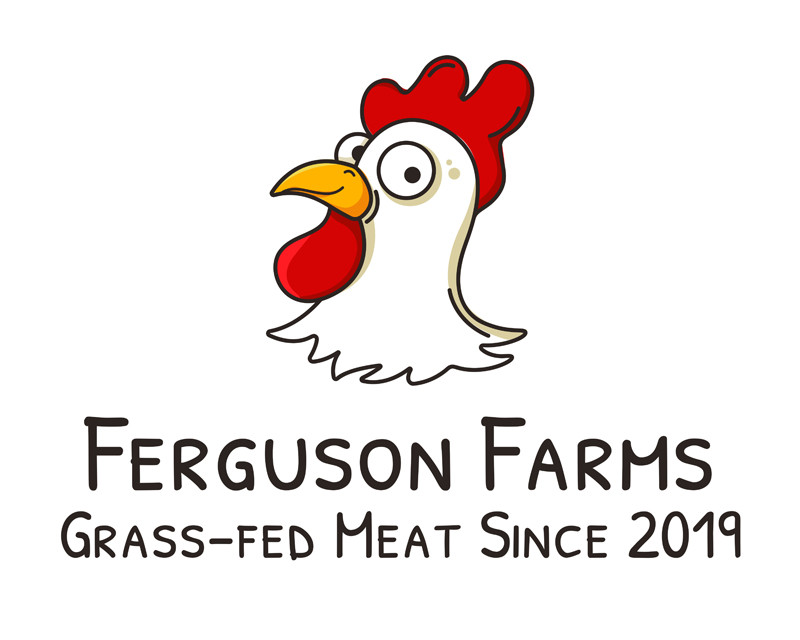Sustainable Ranching in Florida: How Local Farms Are Shaping the Future of Grass‑Fed Beef
posted on
August 15, 2025
Published by Ferguson Farms

At Ferguson Farms, we believe the future of ranching depends on more than producing premium beef—it depends on doing things the right way for the land, the animals, and the families we serve. Across Florida and the broader Southeast, a growing community of ranchers is proving that high standards in animal welfare and land stewardship can live alongside exceptional flavor and nutrition. This article breaks down what sustainable ranching really means, why Florida grass‑fed and finished beef is uniquely positioned to thrive, and how informed choices at the dinner table can support healthier ecosystems and stronger local economies.
What “Grass‑Fed & Finished” Actually Means
“Grass‑fed and finished” describes cattle that consume a diet of grasses and forage for their entire lives—from weaning through harvest—without grain supplementation. That distinction matters. A truly grass‑finished animal develops a different nutrient profile than one that’s finished on grain, typically resulting in a leaner cut with a more complex, mineral‑rich flavor. For customers who value clean ingredients and transparent sourcing, grass‑finished beef provides clarity: the animal’s nutrition mirrors the pasture it grazed.
At Ferguson Farms, that transparency is foundational. Our customers know what’s in (and what’s not in) the food they’re feeding their families. The result is beef that tastes like the place it comes from—Florida’s pastureland—and a supply chain consumers can actually trust.
Why Florida Is Built for Grass‑Fed Beef
Florida’s climate offers a natural advantage for pasture‑based systems. With long growing seasons and abundant sunshine, cattle can graze nearly year‑round. That means fresher forage, fewer inputs, and a lighter environmental footprint compared to feedlot models that depend heavily on imported grain. It also means consistent nutrition for the herd, which translates into dependable quality for customers.
- Extended grazing windows: More days on pasture reduce the need for stored feed.
- Forage diversity: Warm‑season grasses and mixed forbs support micronutrients and natural antioxidants.
- Lower transport intensity: Pasture‑centric systems can reduce the upstream emissions tied to grain.
When you choose Florida grass‑fed beef, you’re supporting a regional food system designed around climate‑smart grazing rather than industrial inputs. That decision keeps value in local communities and encourages more ranchers to improve soil, water, and wildlife habitat.
Health Profile: What Sets Grass‑Fed Apart
Grass‑finished beef typically contains a higher proportion of omega‑3 fatty acids, more conjugated linoleic acid (CLA), and increased levels of antioxidant vitamins like E, alongside a favorable omega‑3 to omega‑6 ratio compared to conventional grain‑fed beef. While marbling is naturally lower, careful cooking (lower temperatures, shorter times, and appropriate resting) delivers tenderness and rich, clean flavor without relying on excessive fat.
- Omega‑3s: Support heart health and help balance modern diets that skew omega‑6 heavy.
- CLA: Studied for potential benefits in body composition and metabolic health.
- Antioxidants: Natural pasture diets contribute compounds associated with cellular health.
Regenerative Agriculture: Beyond “Do No Harm”
Sustainability asks us to maintain what we have; regenerative agriculture asks us to improve it. In practice, that means managing livestock in ways that build soil organic matter, increase biodiversity, and enhance water infiltration. At Ferguson Farms, we use rotational grazing and adequate rest periods so plant communities recover fully, roots run deeper, and pastures become more resilient against heat and drought. Over time, this approach transforms fields into carbon‑sequestering, life‑supporting landscapes.
Regeneration isn’t a marketing slogan. It’s a long‑term commitment that aligns animal nutrition with ecological function and yields beef that is both flavorful and responsibly raised.
Florida Producers Leaning Into Pasture‑Based Systems
The movement is larger than any single ranch. Across the region, producers are strengthening a pasture‑first model and helping the public understand where great beef really comes from. Many operations, such as Florida Premium Beef, Wholly Cow Farms, Hassell Cattle Company, and Tribe Ranch, share a dedication to pasture‑based animal care, low‑stress handling, and transparent sourcing.
While each ranch has its own methods, the common thread is clear: managed grazing, respect for the animals, and a belief that better beef begins with better grass. Highlighting peers who uphold strong standards helps customers recognize authentic practices and rewards producers who do the hard work the right way.
Ethical Meat: What Responsible Customers Look For
Ethically minded shoppers want to know how feed is grown, how cattle are handled, and how animals are processed. They care about the treatment of workers and whether their purchases sustain rural livelihoods. Grass‑fed and finished systems—especially when paired with regional processing and direct‑to‑consumer delivery—offer a clear line of sight from pasture to plate. That visibility is good for trust, and trust is good for families making long‑term nutrition decisions.
- Animal welfare: Space to move, graze, and express natural behaviors.
- Transparency: Clear standards and labels customers can verify.
- Community impact: Dollars that circulate locally and support future producers.
Cooking for Flavor and Tenderness
Because grass‑finished beef is naturally leaner, technique matters. Aim for lower cooking temperatures and avoid overshooting your desired doneness. For steaks, pat dry, season generously, and use a hot sear followed by a gentle finish—either in the oven or by resting off heat. For roasts and tougher cuts, low‑and‑slow methods like braising or smoking (with careful temperature control) yield buttery textures without drying out the meat.
- Temperature: Pull steaks at 5–10°F below your target; carryover heat will finish the job.
- Resting: Give cuts time to relax so juices redistribute.
- Slicing: Always slice across the grain for tenderness.
Customer Confidence Through Clear Standards
Labels can be confusing. When in doubt, look for explicit language—“100% grass‑fed and finished”—and ask how cattle are managed on pasture. Third‑party verifications and detailed product pages are helpful, but nothing replaces a direct relationship with the ranch. We encourage customers to read, ask questions, and choose producers who welcome dialogue. That’s the heart of a trustworthy food system.
Why Direct‑From‑Ranch Delivery Wins
Buying direct ensures the story stays intact. Rather than moving through long, anonymous supply chains, your beef arrives with a name, a place, and a practice behind it. At Ferguson Farms, we ship nationwide with careful cold‑chain handling so your order arrives frozen, safe, and ready to cook. The value isn’t just in convenience; it’s in knowing your dollars reward better land management and animal care.
How We Ranch at Ferguson Farms
Our approach is simple: prioritize the pasture, care for the herd, and deliver food we’re proud to put on our own table. We use rotational grazing to avoid overuse, protect riparian areas, and give grasses the rest they need to rebound. We keep handling stress low, avoid added hormones, and rely on responsible veterinary care. And because food should be both healthy and joyful, we focus on cuts and boxes that make it easy for families to cook well every week.
When you support our ranch and other pasture‑first producers, you’re helping advance a model that’s better for soil, water, wildlife, and rural livelihoods. That’s what sustainable ranching looks like in real life: practical choices that add up over time.
Practical Ways to Support Sustainable Ranching
- Buy direct: Choose ranch‑to‑home delivery for traceability and freshness.
- Choose grass‑finished: Support producers who commit to pasture for the full lifecycle.
- Cook with care: Honor the animal and the land by mastering gentle techniques.
- Share the story: Tell friends and neighbors why sourcing matters.
Your food budget is a vote. Cast it for a system that nourishes people and places, not just supply chains.
The Bottom Line
Florida’s ranchers are demonstrating that beef can be both exceptional and responsible. By choosing grass‑fed and finished beef from producers who manage land with intention, you get clean flavor, meaningful nutrition, and the satisfaction of supporting practices that leave the pasture stronger than we found it. That’s the promise of sustainable ranching—and it’s what we work toward every day at Ferguson Farms.
Ready to taste the difference? Explore our curated boxes and seasonal specials to stock your freezer with premium cuts you’ll feel great about serving.
Related Products & Articles
Author Bio
Mike Ferguson is the founder of Ferguson Farms, a family‑owned operation dedicated to providing 100% grass‑fed and finished beef, pasture‑raised poultry, and wild‑caught seafood to customers nationwide. With a passion for sustainable agriculture and ethical farming practices, Mike is committed to delivering exceptional products while preserving the land for future generations.




